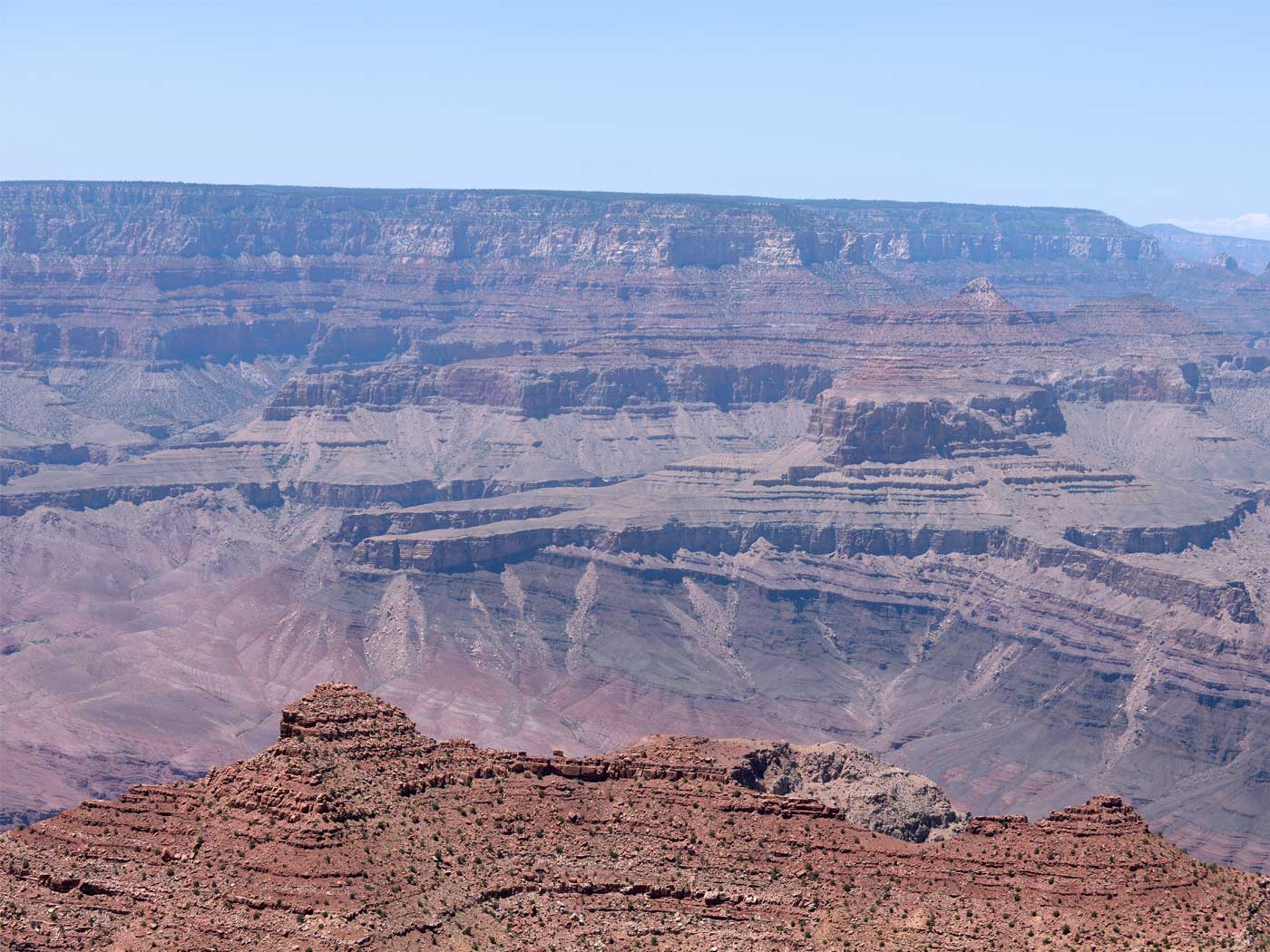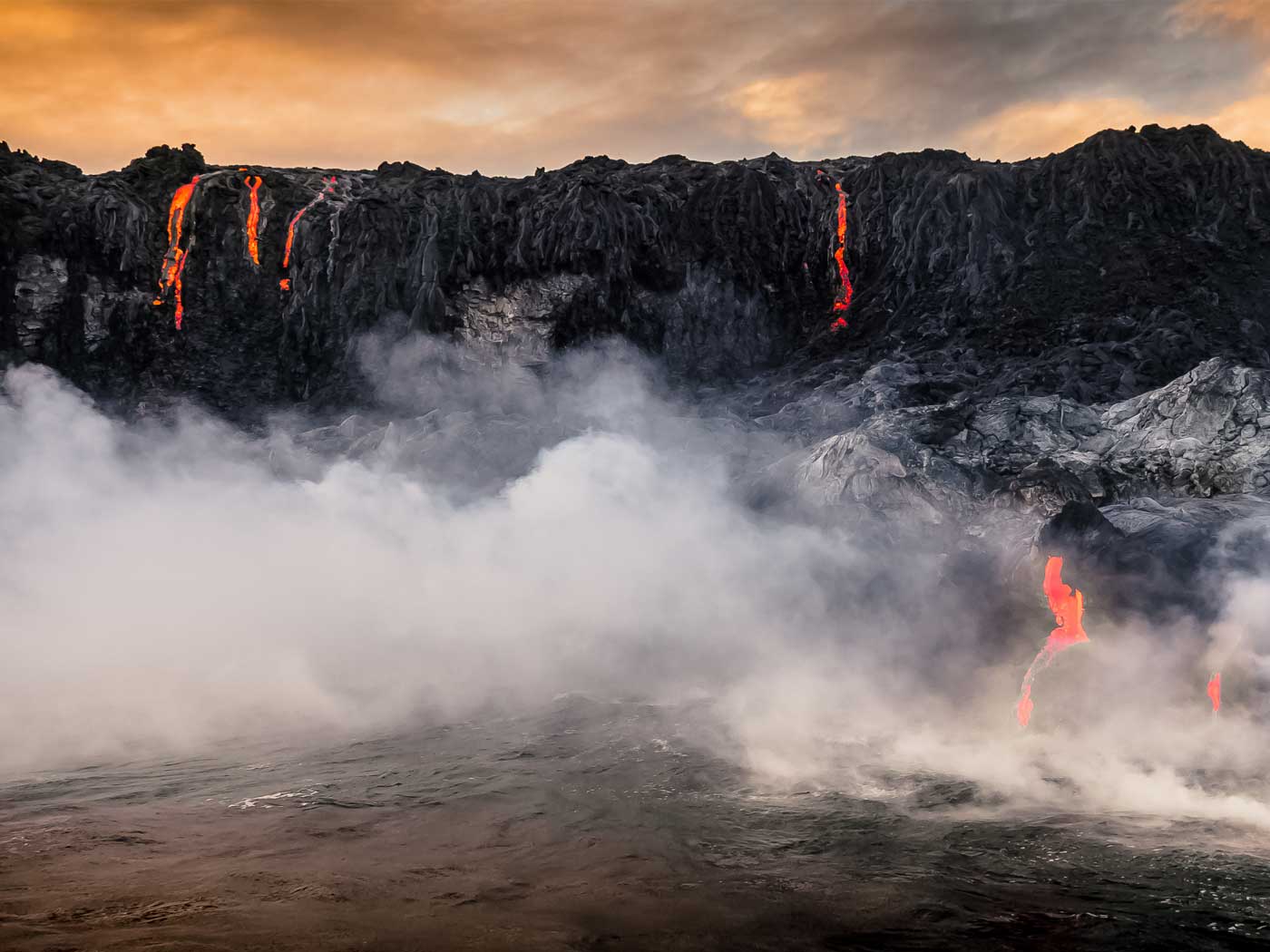Two recent articles in Nature Geoscience may provide important validations of the global Flood. Did researchers find evidence of the “fountains of the great deep” that started the deluge?
Timothy Paulsen, from the University of Wisconsin Oshkosh, and co-authors from Michigan Technological University and ETH Zurich, found evidence of a spike in volcanic activity and a rapid release of massive amounts of carbon dioxide just prior to the deposition of Cambrian rock layers.1
Cambrian rocks are considered by many creation geologists to represent the first extensive Flood deposits. Cambrian sediments are the bottom-most layer in the Sauk megasequence and contain fossils of the so-called Cambrian Explosion—the first sediments with prolific numbers of hard-shelled organisms.2
Cambrian rocks are considered by many creation geologists to represent the first extensive Flood deposits. ![]()
Paulsen and his colleagues conducted trace element analysis on zircon crystals from Antarctica and compared them to previous studies of global magmatism. They determined there is evidence of a massive outpouring of carbon dioxide and associated volcanic activity just before the deposition of the Sauk megasequence in a system called the Ediacaran. The Ediacaran is what secularists call the latest Precambrian or Neoproterozoic.
In another paper in the same issue of Nature Geoscience, Sascha Brune, and co-authors report:
“CO2 behaves as an incompatible element and is readily transported to shallow crustal levels during melt migration. Although a certain fraction is released to the atmosphere during volcanic eruptions, recent studies indicate that much higher CO2 release occurs due to circulation of hydrothermal fluids and degassing along normal faults without eruptive volcanism.”3
These scientists claim that spikes in CO2 are associated with continental rifting that produces normal faults and conduits for hydrothermal minerals like copper.3
In North America, there is ample evidence of pre-Sauk volcanism and rifting down the middle of the continent—the Midcontinent Rift. Here, the pre-Sauk produced a tremendous outpouring of basaltic lava that split open central North America.4 This north-south fracture extends over 1,800 miles across what is now Lake Superior all the way to Kansas, and produced nearly 500,000 cubic miles of lava!4 The Midcontinent Rift contains far more than lava flows—over 11 billion pounds of copper were mined from the Rift in Michigan’s Upper Peninsula alone. Tremendous volumes of superheated groundwater (~430ºF, or 220ºC) followed the eruption of lava and placed the huge copper deposits within the flows.4
So, whether by increased volcanic activity or increased hydrothermal activity, there appears to be significant evidence of a spike in global volcanic action and associated rifting prior to the deposition of the Sauk megasequence. Could this be evidence of the breaking up of the “fountains of the great deep” mentioned in Genesis 7:11?
Modern ocean ridges, normal faults, hydrothermal activity and volcanism are found beneath every ocean of the world. The ocean ridge system extends 45,000 miles, connecting all of the seas. The system consists of huge, linear mountain chains rising 10,000 feet above the ocean floor with a rift valley marked by normal faults and hydrothermal activity at the center, still actively spewing out basaltic magma. However, the present level of volcanism and rifting is much less than levels in the past as evidenced by these recent studies.
The Bible offers a solution to this newly identified spike in volcanism and rifting. Genesis plainly states that “all the fountains of the great deep were broken up, and the windows of heaven were opened” during the initiation of the Flood (Genesis 7:11). The breaking up of the fountains of the great deep may be a description of the great rifting that took place at the ocean ridges and within continents.5
The Flood was a one-time event like no other. It is no wonder scientists find evidence of its catastrophic history in the rocks. ![]()
Today, we merely see the remnants of this activity in the ridges of our modern oceans. No longer are they spewing out tremendous volumes of lava and massive amounts of CO2. The Flood was a one-time event like no other. It is no wonder scientists find evidence of its catastrophic history in the rocks. The geologic history of the Flood is clearly seen, including the billions of fossils entombed in the rocks on every continent. Time and again, science confirms the historical accuracy of the Bible.
References
- Paulsen, T. et al. 2017. Evidence of a spike in mantle carbon outgassing during the Ediacaran period. Nature Geoscience. 10 (12): 930-934.
- Clarey, T. 2015. Grappling with Megasequences. Acts & Facts. 44 (4): 18-19.
- Brune, S., S. E. Williams, and R. D. Müller. 2017. Potential links between continental rifting, CO2 degassing and climate change through time. Nature Geoscience. 10 (12): 941.
- Clarey, T. 2014. Fountains of the Deep. Acts & Facts. 43 (12): 16.
- Clarey, T. 2016. Embracing Catastrophic Plate Tectonics. Acts & Facts. 45 (5): 8-11.
*Dr. Timothy Clarey is Research Associate at ICR and earned his doctorate in geology from Western Michigan University.
Article posted on January 18, 2018.























